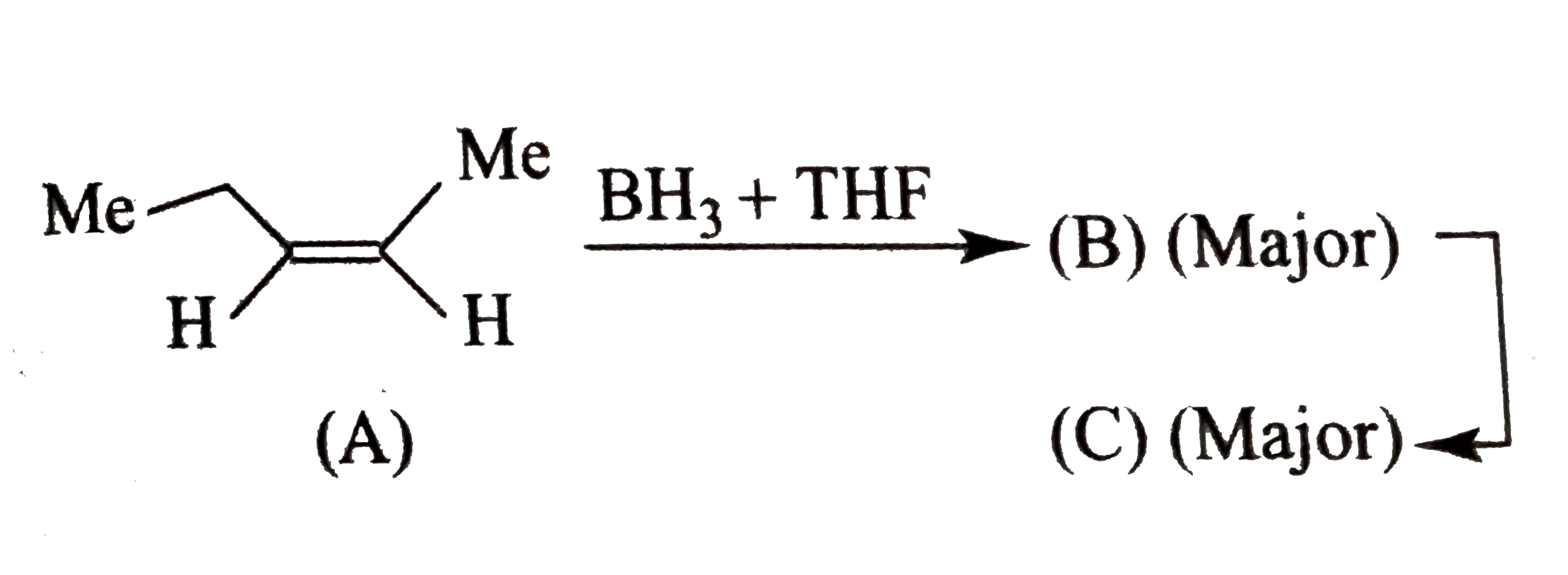Name the classes of hydrides to which H2O,B2H6 and NaH belong.
The correct Answer is:N/a
To classify the hydrides H2O, B2H6, and NaH, we can follow these steps:
Step 1: Classify H2O (Water)
- Identify the central atom: In water, the central atom is oxygen.
- Determine the bonding type: Oxygen is a non-metal and forms covalent bonds with hydrogen by sharing electrons.
- Structure of H2O: The structure consists of two hydrogen atoms covalently bonded to one oxygen atom, with two lone pairs of electrons on the oxygen.
- Classify the hydride: Since it involves covalent bonding and has lone pairs of electrons, H2O is classified as a covalent hydride and specifically as an electron-rich hydride due to the presence of lone pairs.
Step 2: Classify B2H6 (Diborane)
- Identify the central atoms: The central atoms are boron.
- Determine the bonding type: Boron also forms covalent bonds. In B2H6, there are two terminal hydrogen atoms and two bridging hydrogen atoms.
- Structure of B2H6: The structure includes three-center two-electron bonds (banana bonds) between boron and hydrogen.
- Count the valence electrons: Boron has 3 valence electrons, and with 2 boron atoms and 6 hydrogen atoms, we have a total of 12 electrons available. However, to form the required bonds, we need 16 electrons, indicating that B2H6 is electron-deficient.
- Classify the hydride: Therefore, B2H6 is classified as a covalent hydride and specifically as an electron-deficient hydride.
Step 3: Classify NaH (Sodium Hydride)
- Identify the nature of sodium: Sodium is a metal and tends to lose electrons.
- Determine the bonding type: Sodium forms ionic bonds with hydrogen.
- Structure of NaH: Sodium donates an electron to hydrogen, resulting in the formation of Na+ and H−.
- Classify the hydride: Thus, NaH is classified as an ionic or saline hydride.
Final Classification
- H2O is a covalent hydride and electron-rich hydride.
- B2H6 is a covalent hydride and electron-deficient hydride.
- NaH is an ionic or saline hydride.
---
- Identify the central atom: In water, the central atom is oxygen.
- Determine the bonding type: Oxygen is a non-metal and forms covalent bonds with hydrogen by sharing electrons.
- Structure of H2O: The structure consists of two hydrogen atoms covalently bonded to one oxygen atom, with two lone pairs of electrons on the oxygen.
- Classify the hydride: Since it involves covalent bonding and has lone pairs of electrons, H2O is classified as a covalent hydride and specifically as an electron-rich hydride due to the presence of lone pairs.
- Identify the central atoms: The central atoms are boron.
- Determine the bonding type: Boron also forms covalent bonds. In B2H6, there are two terminal hydrogen atoms and two bridging hydrogen atoms.
- Structure of B2H6: The structure includes three-center two-electron bonds (banana bonds) between boron and hydrogen.
- Count the valence electrons: Boron has 3 valence electrons, and with 2 boron atoms and 6 hydrogen atoms, we have a total of 12 electrons available. However, to form the required bonds, we need 16 electrons, indicating that B2H6 is electron-deficient.
- Classify the hydride: Therefore, B2H6 is classified as a covalent hydride and specifically as an electron-deficient hydride.
- Identify the nature of sodium: Sodium is a metal and tends to lose electrons.
- Determine the bonding type: Sodium forms ionic bonds with hydrogen.
- Structure of NaH: Sodium donates an electron to hydrogen, resulting in the formation of Na+ and H−.
- Classify the hydride: Thus, NaH is classified as an ionic or saline hydride.
- H2O is a covalent hydride and electron-rich hydride.
- B2H6 is a covalent hydride and electron-deficient hydride.
- NaH is an ionic or saline hydride.
Topper's Solved these Questions
- HYDROGENBOOK - NCERT EXEMPLAR ENGLISHCHAPTER - HYDROGENEXERCISE - MATCHING THE COLUMNS
4 Videos
- HYDROGENBOOK - NCERT EXEMPLAR ENGLISHCHAPTER - HYDROGENEXERCISE - ASSERTION AND REASON
2 Videos
- HYDROGENBOOK - NCERT EXEMPLAR ENGLISHCHAPTER - HYDROGENEXERCISE - LONG ANSWER TYPE QUESTIONS
8 Videos
- HYDROCARBONSBOOK - NCERT EXEMPLAR ENGLISHCHAPTER - HYDROCARBONSEXERCISE - Long Answer Type Questions
4 Videos
- ORGANIC CHEMISTRY : SOME BASIC PRINCIPLES AND TECHNIQUESBOOK - NCERT EXEMPLAR ENGLISHCHAPTER - ORGANIC CHEMISTRY : SOME BASIC PRINCIPLES AND TECHNIQUESEXERCISE - Long Answer type question
6 Videos
Similar Questions
Knowledge Check
Assertion : Acidic character of group 16 hydrides increases from H2O to H2Te.
Reason : Thermal stablility of hydrides decreases down the group.AIf both assertion and reason are true and reason is the correct explanation of assertion.BIf both assertion and reason are true but reason is not the correct explanation of assertion.CIf assertion is true but reason is false.DIf both assertion and reason are false.
1−Methylcyclohexene is allowed to react with B2H6. The
product is then treated with H2O2 and NaOH. The reaction is -
_E01_007_Q01.png)
The product formed is
View Solution(a) Name the blue compound formed in the reaction of H2O2 with acidified K2Cr2O7 in ether? Give reaction.
(b) What is the principle in the bleaching action of H2O2 ?
View SolutionDetermine the enthalpy of formation of B2H6(g) in kJ/mol of the following reaction :
B2H6(g)+3O2(g)→B2O3(s)+3H2O(g),
Given : ΔrH∘=−1941 kJ/mol, ΔH∘f(B2O3,s)=−1273 kJ/mol,
ΔH∘f(H2O,g)=−241.8 kJ/mol
View SolutionIUPAC Name of C6H5COC2H5
View SolutionName the following boric acids:
a.H3BO3 or B2O3.3H2O
b.HBO2 or B2O3.H2O
c. H2B4O7 or 2B2O3.H2O
d. H6B4O9 or 2B2O3.3H2O
View SolutionName two compounds which retard the decomposition of H2O2.
View SolutionCalculate equivalent weight of H3PO4 and Ca(OH)2 on the basis of given reaction.
H3PO4+NaOH→NaH2PO4+H2O
Ca(OH)2+HCL→Ca(OH)CL+H2O
View Solution

